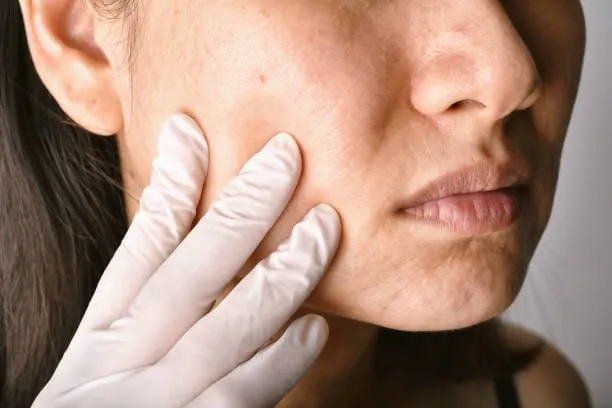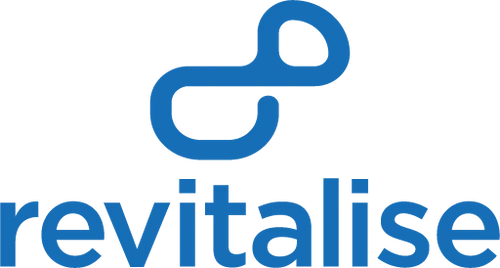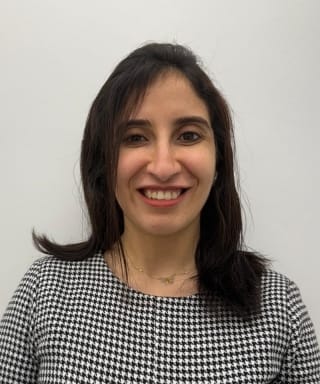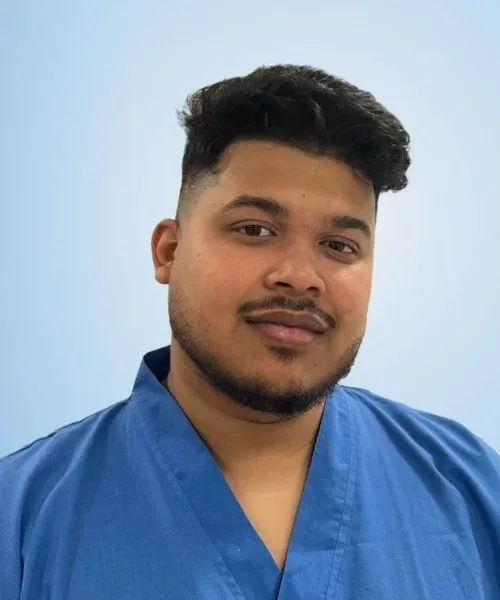Facial Cyst Removal Explained: Causes, Treatments & Recovery
Cysts can appear anywhere on the body, but when they appear on the face, they can cause added stress—making facial cyst removal a common and sought-after solution.However, these fluid-filled lumps may be painless, affect confidence, and lead to untreated Disease. That’s why, when you have a facial cyst, facial cyst removal is not just a cosmetic choice; it can also be a medical necessity.

Revitalise London is a clinic specialising in advanced cyst removal treatments for facial and body cysts. Our expert dermatologists and skin specialists take a safe, minimally invasive approach and use techniques to treat an epidermoid cyst on your cheek or a sebaceous cyst on your back with lasting results.
Several factors affect how the cyst should be treated, including its size, location, type, skin type, and condition. The objective is always the same: try to remove the cyst without too much discomfort and scarring.
This article will discuss the best ways to remove a facial cyst, how treatment varies for a body cyst, what to expect when recovering, and why choosing an experienced London clinic such as Revitalise London is essential.
Types and Causes of Facial and Body Cysts
Before choosing a treatment for facial cyst removal, you must know what type of cyst is forming on your skin. However, the cysts are usually benign (noncancerous) but may appear differently, be different sizes, and cause various symptoms.
Common types of cysts include:
These are the most common type of skin cysts, and they are found on the face, neck, and upper body. They are caused by a buildup of keratin under the skin.
- Sebaceous cysts develop from blocked sebaceous glands and are typically seen on the face, scalp, or back. In some cases, they grow slowly and may become inflamed or contaminated.
- Pilar cysts – The hair follicle forms the pilar cyst, which usually appears on the scalp but may occur anywhere on the body and is typically firm and smooth.
- Severe acne – Acne cysts are inflamed and painful and usually appear on the face or back.
What causes cysts?
- Hormonal imbalances
- Blocked pores or glands
- Skin trauma or injury
- Genetic conditions (like Steatocystoma Multiplex)
Not all cysts need to be removed; if one grows rapidly, becomes painful, and affects one’s appearance, especially on the face, it’s time to ask for professional treatment. Removing facial cysts is not only for aesthetic reasons but also to help prevent possible Disease or scarring.
Early diagnosis and appropriate treatment are essential. Our team at Revitalise London performs an in-depth assessment of the cyst and suggests the safest and best form of removal.
Facial Cyst Removal Options: Non-Invasive and Treatments Methods
There are two approaches to facial cyst removal: nonTreatments dermatological treatments and Treatments procedures. The decision ultimately depends on the cyst’s kind, size, percentage, and situation.

Non-Invasive Facial Cyst Removal Treatments:
- Corticosteroid Injections: These help treat acne cysts or any inflamed sebaceous cysts.
- Cyst treatment (Laser): This involves treating cysts with precision, especially those that are small or superficial and located on sensitive areas like the face.
- Minor Excision and Drainage: The cyst is removed, but the skin is not damaged, as an incision is made just enough to drain the contents without any tissue disruption. This procedure is suitable for cysts that are not deeply embedded.
While these methods are quick, involve minimal downtime, and are cosmetically more appealing, they are particularly well-suited for those facial areas that need to minimise scarring.
Treatments Cyst Removal Treatments:
- Excision: The cyst and its sac are removed, but the rest of the surrounding normal tissue will remain. This is the most effective method for more significant or recurring facial cysts.
- Incision and Drainage is commonly used to treat an contaminated cyst. The procedure relieves pain and pressure but does not destroy the cyst’s wall; recurrence is possible.
- Although Treatments options are more invasive and may include stitches, they provide a permanent solution, mainly when undertaken by a skilled hand.
At Revitalise London, we offer both dermatological and Treatments facial cyst removal. Our clinicians assess each case before recommending the best treatment that will cause as little discomfort as possible and leave the same outstanding cosmetic results.
Pros and Cons of Facial Cyst Removal Methods
There are both Non-Invasive and Treatments ways of removing facial cysts, and each has pros and cons. The proper treatment will depend on the size of the cyst, whether it looks big, and how comfortable you are with the texture and its location.
Pros of Non-Invasive Facial Cyst Removal
Short recovery: it is a relatively quick procedure with one of the shortest recovery times among treatments available today.
Scarring risk: Since these procedures do not cut deeply into the skin, they are suitable for the sensitive facial area where scars can be seen.
Most dermatological treatments occur in a single therapy session; this doesn’t need anaesthetic.
Cons of Non-Invasive Facial Cyst Removal
- Some cysts are not permanent and may recur if the sac is not entirely removed.
- Non-Invasive use: Large or deep cysts may not be suitable for Non-Invasive methods.
Pros of Treatments Facial Cyst Removal
- Long-term solution: Treatments excision will remove the cyst and its sac with no risk of recurrence.
- Deep or contaminated cysts are often treated with Procedure, suitable for larger cysts.
Cons of Treatments Facial Cyst Removal
- Scarring risk: Although skilled practitioners reduce scarring, there will be some, especially in sensitive areas.
- Healing time: Healing may take a week to a month or more for larger or deeper cysts.
This will let you know the best and safest facial cyst removal treatment. There is no one-size-fits-all approach to cyst treatment, and your skin type, cosmetic goals, and the nature of the cyst all factor into the equation.
Facial Cyst Removal Cost and What to Expect
Understanding the cost of facial cyst removal is essential when planning your treatment. The price can vary depending on the cyst’s size, kind, location, and the clinic’s knowledge and method.
Average Cost of Facial Cyst Removal
- In terms of dermatological treatments, steroid injections or laser therapy can cost anything from £150 to £500 per session.
- As with all cysts, Treatments removal, especially if the cyst is large or deep, can cost between £ 300 and £900.
- Follow-up visits, lab testing, and aftercare products may cost more if necessary.
Factors That Influence the Cost
- They are also more expensive to remove large, complex cysts, including contaminated, deeply rooted, and small cysts.
- Clinic location: Prices in central London may be higher than in the surrounding areas.
- Experience of the doctor: A more experienced doctor may charge a higher fee but usually provides better results and is less prone to recurrence.
What to Expect During the Procedure
Knowing the facts about facial cyst removal can help you decide to remove it and ensure you feel comfortable and informed throughout the process. Treatment, consultation, and recovery are the three main stages of the procedure. As you can see, we will go through each step to clarify the picture.

1. Consultation: A Thorough Assessment
Facial cyst removal begins with your practitioner’s consultation. During this meeting, the dermatologist will examine your cyst, determine its size, what kind it is, and where it is, and assess your overall health. It is essential for this consultation because it will help the medical professional determine the most appropriate removal method. The expert will explain the different types of cysts for example, sebaceous cyst, epidermoid cyst, etc. and choose the most suitable approach for you.
With Revitalise London, our practitioners are all experienced and will take the time to talk you through all your treatment options and to let you know what to expect and any potential risks. This will give you some idea about your treatment plan. In addition, the consultation will include any pre-procedure instructions as to what medications you may need to stop or what skincare products you should avoid to have the best possible outcome.
2. Treatment: The Removal Process
The treatment will continue after you decide which cyst removal method you want. The treatment depends on the size and the nature of the cyst and the technique that is recommended:
- Non-Invasive Treatments: These are faster, less invasive, and have fewer downtime treatments. For smaller cysts, Non-Invasive options such as laser therapy or corticosteroid injections are used. All the procedures are done under local anaesthesia, so you are comfortable. Depending on the complexity, treatment usually takes 30 to 60 minutes. If the cyst is minor, it may be drained, a quick procedure that clears the cyst’s contents and shrinks it.
- Treatments: Largely or more challenging to treat with noninvasive methods, Procedure may be needed to treat larger or more complex cysts. A Treatments cyst removal is making a small incision in the skin to remove the entire cyst. This is also done under local anaesthesia to make you numb the area so you don’t feel any pain. The incision is usually closed with stitches after the cyst is removed. Generally, Treatments methods take longer than Non-Invasive ones, but they are still short, usually within 30 minutes to an hour.
When you come to Revitalise London, we are proud to use the most advanced techniques and equipment. Whether you choose a Non-Invasive or Treatments option, you will benefit from the best care.
3. Recovery: Healing and Aftercare
The healing time after facial cyst removal primarily depends on your treatment. Generally, the Non-Invasive treatments have minimal downtime. Possible side effects may include some redness, swelling, or mild discomfort in the treated area, often going away within a few hours to a few days. Once treatment is completed, most patients return to their daily activities almost immediately and should avoid touching or applying pressure to the treated area.
If you undergo any Treatments procedure, the recovery time becomes longer. You may have to follow aftercare instructions for proper healing after Procedure. It can include cleaning the affected area, maintaining prescribed ointments, and sometimes wearing a bandage for a few days to cover the incision. You may be required to follow up with the clinic to remove stitches and assess for healing. Procedure is usually fully recoverable in a week, but this could depend on the specific condition.
Revitalise London’s team is dedicated to clear aftercare instructions and will be there for you if you have any questions or concerns during recovery. If you have no complications, we will monitor your progress and provide help if you need it, such as getting stitches removed if necessary.
Why Facial Cyst Removal Is About More Than Just the Procedure
It is about removing the cyst and ensuring your skin’s appearance is intact and healthy. Whether you have a minor or extensive procedure, you want to preserve your skin’s aesthetics to the best. Choosing a clinic that specialises in facial cyst removal is crucial to obtaining optimal results. Revitalise London offers expert care through maintaining skin health and a smooth, fast recovery.
Suppose you select a reliable clinic like Revitalise London. In that case, you can trust that your facial cyst removal will be done properly, safely, and inconveniencing your everyday life as little as feasible. We know that you have already decided to have this procedure.
Why Choose Revitalise London for Facial Cyst Removal?
We are very proud of our facial cyst removal service at Revitalise London. We deliver both medical safety and cosmetic outcomes. Our clinic is the place to go for cyst removal.
Expertise and Precision in Facial Cyst Removal
Our dermatologists are well-trained in the latest noninvasive and minor Treatments cyst removal techniques. When you know the importance of keeping your skin natural while ensuring the removal of all cysts, you understand what we mean. Our approach will leave as little scarring as possible and feature the best results.
Tailored Treatment Plans
The cyst’s type, size, and location determine the plan for each client’s cyst removal treatment as each client’s needs differ. We use the method to ensure the most effective and aesthetically pleasing laser cyst removal, drainage, or Procedure.
Cutting-Edge Technology
Facial cyst removal procedures are performed using state-of-the-art equipment to be as precise as possible and create as little discomfort as possible. Our advanced technology will reduce the recovery time so you can return to your everyday office life more quickly.
Affordable and Convenient Care
Revitalise London offers facial cyst removal competitively, making top-quality care available to everyone. We provide a comfortable clinic environment, flexible payment options, and a stress-free experience.
Proven Results and Client Satisfaction
Many clients have praised our clients for their clinical cyst care from the people of Icon. We are committed to your clearer skin and increased confidence.
Revitalise London has been your partner for healthier, clearer skin when it comes to safe, effective, and aesthetic facial cyst removal.
Aftercare and Recovery Tips for Facial Cyst Removal
It is essential to have proper aftercare to make your recovery after facial cyst removal treatment smooth. You will be given detailed instructions at Revitalise London on how to minimise the chances of complications and aid healing. Here’s what you need to know:
Immediate Aftercare
After facial cyst removal, you must follow post-procedure instructions. Do not touch the treated area for the first 24 to 48 hours to prevent Disease. You may be given topical antibiotic ointment to use on the area. All treated areas must be kept clean and dry for optimal healing.
Managing Swelling and Bruising
After cyst removal, it is typical to have some swelling and bruising, particularly in areas such as the face. Cold compresses can be applied to the treated area to reduce swelling, but not directly on the area. Any discomfort can be alleviated by taking over-the-counter anti-inflammatory medication as your doctor prescribes.
Preventing Disease
To reduce the risk of Disease, do not expose the treatment area to dirty water (for instance, swimming pools) for at least two weeks. Gently wash the area with mild soap and water to keep it clean. Do not pick or scratch at the treated area; this can introduce bacteria and exacerbate the problem.
When to Seek Follow-Up Care
Most patients heal without complications, but the treated area should be monitored for Disease or other unusual healing. If you notice increased redness, pus, or a fever, please contact Revitalise London immediately. The therapist will then schedule a follow-up appointment to ensure proper healing.
Post-Healing Skin Care
Protecting the skin from sun exposure is essential to avoid scarring if the area heals. When in the sun, apply broad-spectrum sunscreen over the treated area and consider using a scar-reducing product to help promote smooth healing.
Aftercare steps will help you to facilitate the healing process and achieve the best possible result of facial cyst removal treatment at Revitalise London.
Our Medical Team
Meet the experienced professionals who will provide your care
Nathalie Emmanuel
Actress - Game of Thrones Star
Had a wonderful experience with Dr Ken and his staff with my forehead lipoma removal. Thorough in planning before the procedure and so far, l've had a great experience with aftercare. When I had any questions there was always someone available to answer them.





